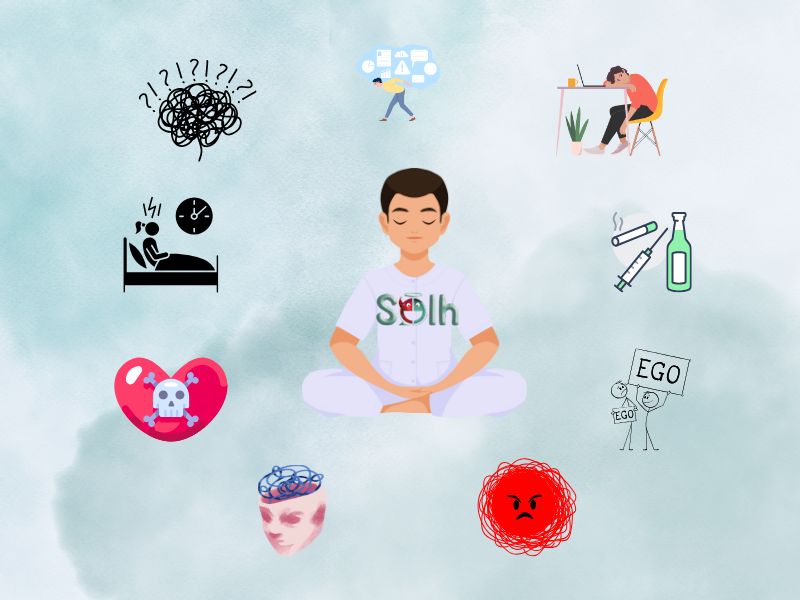Employee burnout signs don't wear a name tag. It doesn’t cry for help. It just sits there—building, festering, rotting people from the inside out—while managers stay busy praising "dedication" and "grit."
It rarely screams. It whispers. And by the time you notice, it’s usually done enough damage.
If you’re still waiting for someone to break down in a meeting to realize they’re not okay, you’re part of the problem.
Here are 5 real signs your best people are running on fumes:
1. They’re Working Just As Hard—But The Output Has Dropped
No, they’re not slacking. They’re spent.
If your star performer suddenly starts making basic errors or submitting half-baked work despite putting in the same hours, it’s not incompetence—it’s employee burnout signs. Their brain are running on empty.
You’ll see it in the tiny things: missed data points, messy formatting, lifeless ideas in meetings.
Don’t slap a “performance improvement” plan on it. Check in. Ask. Investigate. This isn’t about motivation—it’s about depletion. And if you don’t catch it now, you’ll soon be doing exit interviews wondering where it all went wrong.
2. They’re Quiet. And Not The Peaceful Kind.
Employee burnout signs don’t always include storming out. Sometimes, it just pulls away.
You’ll notice it when someone stops showing up to those casual coffee chats. Skips optional meetings. Goes silent during brainstorming sessions. Suddenly, their camera is always off. Their mic? Muted.
They’re not rude. They’re surviving. Social interaction feels like one more task on an already overloaded plate.
If someone once energetic is now just… there, create space. Don’t force the “team bonding” crap. Ask real questions. Privately. Gently. You’re not managing output—you’re managing humans.
3. Their Tone Has Changed. Read Between The Lines.
Watch how they write, not just what they write.
Someone who once replied with warmth now sends dry, robotic messages. Or stops replying altogether. Or over-explains the simplest things because their thoughts are foggy and unfocused.
That’s not personality shift—it’s burnout in disguise. Emotional bandwidth is gone. Autopilot mode is on.
If communication feels off, it probably is. You don’t need therapy credentials. Just awareness. Check in. Not with a form. With a conversation.
4. They’ve Suddenly Become... Rigid
The most ironic thing about employee burnout signs? People often become more disciplined.
They stop volunteering. They say no to every new task. They guard their calendar like it’s their lifeline. You think they’ve lost their spark—they’re actually clinging to what little energy they have left.
This isn’t an entitlement. It’s a cry for boundaries—because they’ve hit the wall.
If someone’s suddenly clocking out at 6:00 sharp or avoiding new projects, don’t call it attitude. Respect it. It might be the only thing keeping them from breaking down.
5. They’re “Sick” More Often Than Usual. And It’s Not Just The Flu.
Burnout shows up in the body before the mind even catches on.
The employee who used to power through everything is now calling in sick for the third time this month. Headaches. Stomach aches. Sleep issues. Vague fatigue. And no, it’s not just the weather.
Stress chips away at immunity. Chronic pressure becomes chronic illness.
Don’t play doctor. But don’t ignore patterns either. If more than one person is feeling unwell often, the problem might not be their bodies—it might be your workplace.
How To Catch Employee Burnout Signs Before It’s Too Late
You need a real system—not just a motivational poster in the hallway.
Weekly one-on-ones that go beyond deadlines.
Track quality trends, not just quantity.
Anonymous feedback that actually leads to something.
Conversations that don’t require employees to be “brave” to be honest.
Employee burnout signs don't wait for your next performance cycle. It just quietly dismantles everything—your people, your culture, your results.
And the worst part? You’ll never see it coming—unless you learn to look.
You’re not just protecting employees. You’re protecting what makes your company worth working for.
That starts with real workplace stress management , not just posters and policies, but consistent action.



